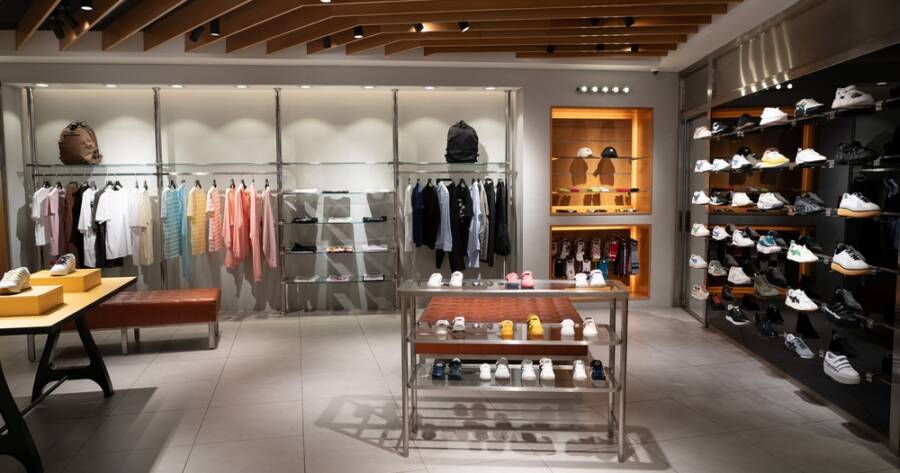In the competitive landscape of retail, creating an engaging and enticing shopping experience has become a crucial strategy for driving sales. Retailers employ a variety of tactics to influence consumer behavior and enhance the buyer journey. From sensory elements like lighting and music to strategic store layouts and personalized interactions, these tactics work collectively to shape consumer perceptions and encourage purchases.
The Power of Store Layouts
Store layout is a foundational element in guiding customer behavior and maximizing sales. Retailers design pathways and product placements that naturally lead customers through the store, optimizing their exposure to a wide range of products.
One common layout strategy is the creation of a decompression zone—a space just inside the entrance where customers can acclimate to the store environment. Beyond this zone, stores often employ a racetrack design, leading shoppers through a predetermined path that encourages exploration and maximizes viewable merchandise.
Visual merchandising plays a vital role in store layouts, with compelling product displays enticing customers to linger and consider purchases. By arranging products in coordinated groupings or themes, retailers create visually appealing narratives that draw customer attention, potentially increasing the likelihood of impulse buys.
Utilizing Sensory Marketing
Sensory marketing engages multiple senses to create memorable and immersive shopping experiences. Retailers employ lighting, music, scents, and even textures to evoke emotions, influence perceptions, and enhance brand identity.
Lighting can influence mood and highlight product features, with dynamic lighting choices conveying atmosphere or time-of-day changes. Upbeat music might energize shoppers, while calming tunes could extend store visits, facilitating a relaxed shopping pace.
Scents are another powerful tool, capable of triggering emotions and memories. Subtle, pleasant scents tailored to brand identity or product offerings may increase dwell time and enhance the perceived quality of products. By integrating sensory elements that resonate with target demographics, retailers craft environments that encourage positive emotional connections and spending.
The Impact of Color Psychology
Color psychology examines how different colors influence human emotions and behavior, offering valuable insights for crafting retail environments. Retailers strategically utilize color to communicate messages and create desired atmospheres within their stores.
Warm colors like red, orange, and yellow can evoke excitement and urgency, often used to promote sales or create a sense of vibrancy. Conversely, cool colors such as blue and green create calming, inviting spaces, encouraging relaxed browsing and contemplation.
By cultivating a color scheme aligned with brand messaging and customer expectations, retailers enhance store ambiance and potentially influence shopping behaviors. This understanding of color psychology allows retailers to design attractive environments that align with their strategic goals and brand identity.
Building Customer Engagement Through Interactivity
Engaging customers through interactive experiences can significantly enhance the sensory and emotional impact of a retail visit. Interactive elements foster deeper connections, transform passive shoppers into active participants, and influence purchasing decisions.
In-store technology, such as touchscreens with product customization features or virtual try-on stations, allows consumers to explore and personalize products, creating a tailored shopping experience. Interactive displays and social media integration may also facilitate direct consumer interaction with the brand, enhancing loyalty and fostering community presence.
Through active participation, retailers provide unique, memorable experiences that differentiate them from competitors, offering both entertainment and utility while cultivating deeper brand connections.
Personalized Customer Interactions
Incorporating personal touchpoints throughout the shopping experience can create a more intimate connection with each customer. Retailers may utilize data gathered from loyalty programs or customer preferences to tailor recommendations, promotions, and communications.
Personalized interactions can include greeting customers by name, offering customized product suggestions, or providing exclusive offers based on shopping history. This level of personalization not only enhances customer satisfaction but may also increase conversion rates and foster brand loyalty.
By recognizing and respecting individual preferences, retailers demonstrate a commitment to serving customer needs, building trust and strengthening relationships with their audience.
Crafting a Seamless Omnichannel Experience
In today’s digital age, delivering a seamless omnichannel experience can be a powerful retail tactic, integrating online and in-store environments to create a consistent brand journey. Retailers may offer services like click-and-collect, where customers purchase online and pick up in-store, blending convenience with physical interaction.
Ensuring consistency in inventory, pricing, and promotions across channels minimizes friction and confusion, reinforcing a cohesive brand image. Emphasizing convenience and flexibility through integrated platforms can enhance customer satisfaction, encouraging return visits and higher spending.
This strategy empowers retailers to meet consumers where they are, capitalizing on convenience while maintaining a personalized shopping experience that bridges online and offline worlds.
Learn More Today!
Retailers strategically leverage a variety of tactics to craft buyer experiences designed to maximize engagement and drive sales. From the influence of store layouts and sensory marketing to color psychology and personalized interactions, each tactic contributes to an overarching strategy aimed at creating memorable shopping journeys.
By understanding and decoding these tactics, consumers can become more mindful of the elements influencing their shopping behaviors. Meanwhile, retailers continue to innovate and refine their approaches, paving the way for increasingly sophisticated and engaging retail environments that resonate with today’s dynamic consumer expectations, fostering deeper connections and loyalty.

